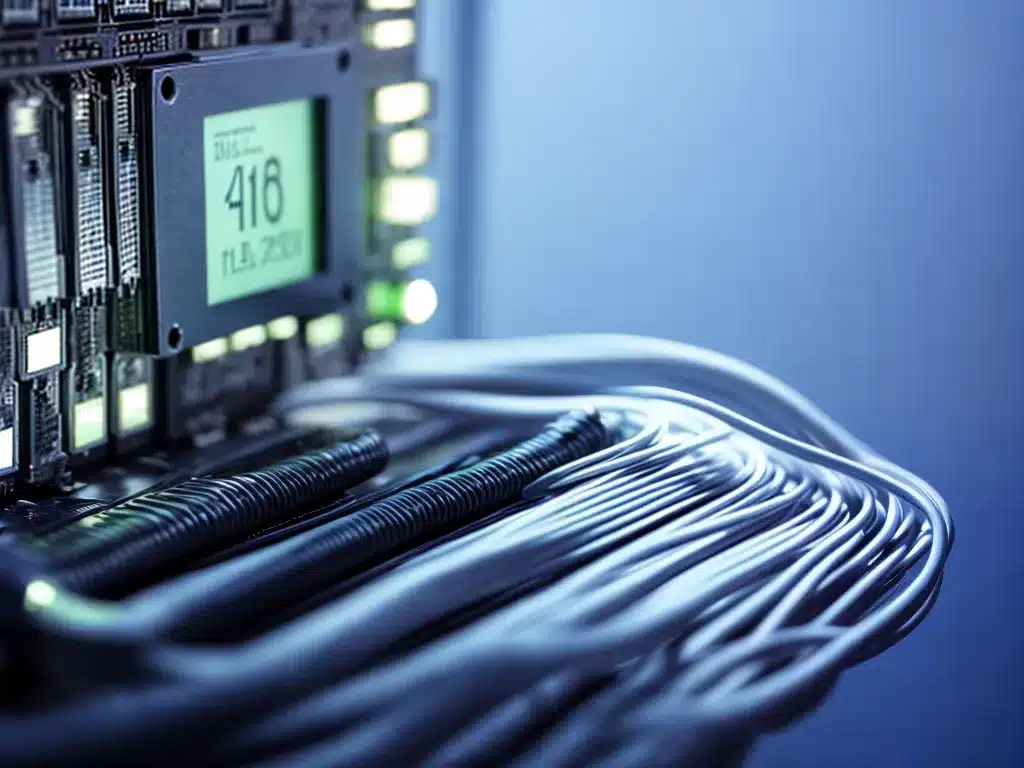
How to Troubleshoot Slow Internet Speeds
Having slow internet speeds can be incredibly frustrating. There are many potential causes for reduced internet speeds, but thankfully there are also steps you can take to diagnose and address the issue. Here is a comprehensive guide on how to troubleshoot slow internet speeds.
Run a Speed Test
The first step is to verify your actual internet speeds using an online speed test. This will tell you your current download and upload speeds and allow you to confirm there is an issue.
Some popular speed test sites include:
Run a test connected directly to your modem via ethernet cable to remove WiFi as a potential bottleneck. Compare your results to the speeds you are paying your ISP for – if your speeds are significantly lower, there is likely an issue.
Check Connections and Cables
Physical connection problems can slow down internet speeds. Here are some things to check:
- Ensure cables are tightly secured at all connection points. Loose cables can cause intermittent connectivity.
- Inspect cables for damage like kinks or corroded/bent pins. Damaged cables may need to be replaced.
- Try swapping in new Ethernet cables to rule out cable issues. Use Cat 5e or Cat 6 cables for best performance.
- Plug devices directly into modem to isolate other factors. If speeds improve, the issue may be with routers/WiFi.
Proper cable connections are essential for maintaining optimal speeds. Replacing any damaged cables can often provide an immediate boost.
Reset Network Equipment
Rebooting or resetting network components like modems, routers, range extenders can clear up a lot of speed issues:
- Unplug modems and routers for 60 seconds to power cycle them. This can clear any transient connection problems.
- Log into the router admin interface and restart/reboot the router.
- Reset the router to factory default settings. This will wipe out any bad configurations causing problems.
- Check for and install firmware updates for modems, routers, and other hardware like network switches.
Resetting and updating network equipment is one of the easiest ways to refresh your connectivity and maximize speeds.
Check for Bandwidth Bottlenecks
Many speed issues are caused by bandwidth congestion somewhere in the network. Here are some things to look out for:
- Check for bandwidth hogging devices like security cameras or servers in your network streaming large amounts of data. Limit their bandwidth if needed.
- Make sure no one is downloading large files during a speed test. Downloads can use all available bandwidth and skew results.
- Test with WiFi disabled to rule out wireless congestion in the network. Use ethernet for the most accurate speed measurements.
- Inspect modem logs for connection errors indicating line problems with your ISP. This may require contacting your ISP for analysis.
Identifying and eliminating any unusual bandwidth usage can help normalize internet speeds.
Troubleshoot WiFi Connectivity
Wireless connectivity issues can dramatically slow down internet speeds:
- Get closer to the router and test speeds to check for WiFi dead zones. Switch channels on the router if needed.
- Check router placement – relocate to a central location to maximize coverage. Avoid physical obstructions.
- Inspect settings like WiFi bands, channels, encryption types. Reset to default if misconfigured.
- Update router firmware and wireless drivers on devices to improve connectivity.
- Replace very old routers – 802.11ac and WiFi 6 routers offer better range and speeds.
Fixing WiFi issues can significantly boost speeds for wireless devices. Use ethernet for the fastest, most reliable connections.
Contact Your ISP
If you have tried all troubleshooting steps and speed issues persist, contact your Internet Service Provider (ISP) for assistance:
- Check if there are any known outage/issues with your ISP in your area. Major outages can dramatically slow speeds.
- Ask them to test your connection remotely to pinpoint any issues. They can check noise levels, ping times, etc.
- Request a service call if needed to fix line issues causing slow speeds. This may involve replacing wires, amplifiers, filters, etc.
- Check if your plan’s speeds can be increased for better performance. Upgrading to faster speeds can resolve speed problems.
Your ISP has the most insight into line conditions and equipment status impacting your speeds. Working with them is key if all else fails.
Switch Internet Service Providers
If your current ISP is unable to resolve ongoing speed problems, switching providers can improve speeds:
- Research new ISP options in your area – cable, DSL, fiber optic, fixed wireless, satellite are possibilities.
- Compare plans – higher speeds generally cost more. Balance speed and budget.
- Check contract terms and fees – canceling early may incur penalties. Factor these costs.
- Test speeds first if possible – some ISPs offer free trial periods to test service.
- Schedule installation when you are ready to switch. Cancel old service after new is active.
Switching providers is a more involved process but can deliver significantly faster internet if your current ISP’s network is faulty.
Slow internet speeds can be frustrating to deal with. However, following a structured troubleshooting approach can methodically pinpoint and resolve the issue. Try these troubleshooting tips to restore your internet connection to optimal speeds.












